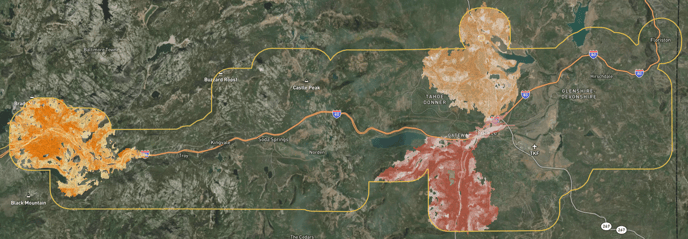Gather consensus amongst partners
Build a project plan that balances multiple objectives
In the previous section, we explored how partners can emphasize objectives, and then use the platform to build a prioritized project plan. This series of projects is known as a scenario. Vibrant Planet provides a common operating picture for you and your partners. There are many points in the process of using the platform that lend themselves to collaboration. Here we will consider a primary tool for collaboration with partners: consensus building.
Vibrant Planet allows each individual partner to log into the platform, view the same planning area, and create their own scenario with different weighted objectives and constraints. After all partners have completed this process, each scenario can then be compared to one another, including the identification of overlapping areas known as complete consensus.
The following example shows a consensus area across two different scenarios:
1. Scenario 1 emphasizes assets and safety at a 4 across three projects totalling 10,000 acres per project
2. Scenario 2 prioritizes all objectives equally across three projects totalling 10,000 acres per project

The platform indicates that a 112,232 acre project costing $28 million would prioritize all partners’ objectives. This is known as a complete consensus scenario.
This is also visually mapped on the platform scenario planning screen.
 You have the option to save this as a new scenario. In the next section, explore how you can examine the detailed financial and management statistics of individual and consensus scenarios.
You have the option to save this as a new scenario. In the next section, explore how you can examine the detailed financial and management statistics of individual and consensus scenarios.
.png?width=800&height=147&name=VP_Logo_Horiz_Color_RGB%20(4).png)